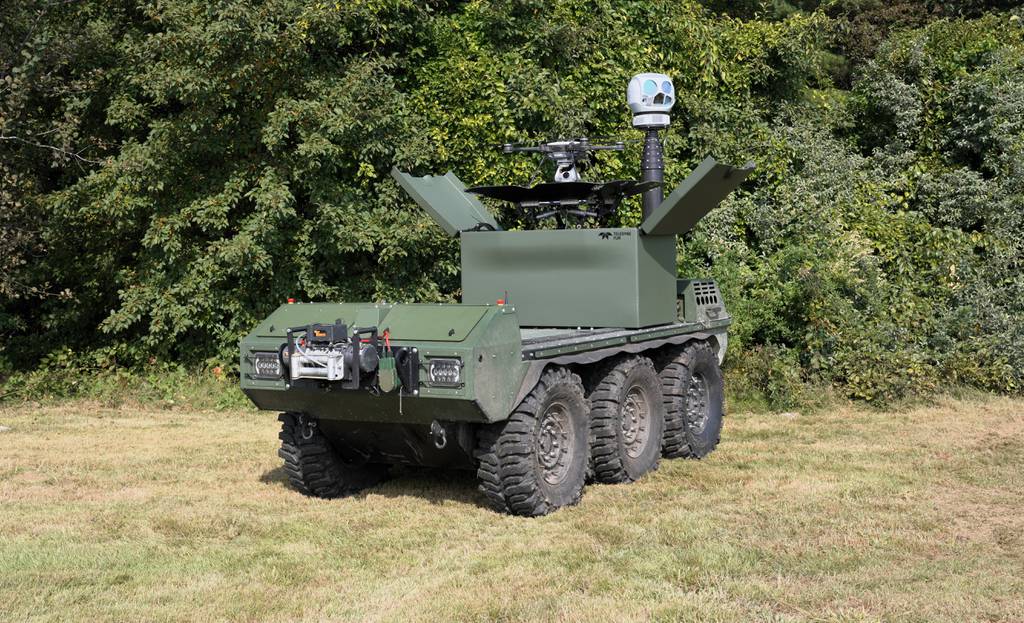WASHINGTON — Teledyne FLIR is entering the competition for the Army’s light equipment carrier.
The Small Multipurpose Equipment Transport vehicle, or SMET, is intended to carry gear and light payloads to make soldiers in the field more nimble. Four companies competed for the first generation in 2017, and General Dynamics Land Systems won the first two contracts in 2019 and 2020. The program is now entering its second increment.
Teledyne FLIR introduced its prototype, the six-wheeled M2RV, at the Association of the U.S. Army’s annual conference. It comes with 38 square feet of cargo space, more than 2,600 pounds of payload capacity, and the ability to move at speeds exceeding 10 mph, according to the company.
The model has two attached payloads. The first is its new R80D SkyRaider, a 10-pound quadcopter drone. The second is its 280-HDEP surveillance system, mounted on the rear of the platform.
Teledyne FLIR built the M2RV with a steel unibody, which increases the strength of the chassis and will suit the rugged environments the SMET will need to navigate, said Chris Brown, a senior systems architect. Such a design also seals everything below the cargo deck, around 3 feet high, he said, allowing the vehicle to ford bodies of water up to that height.
“You really end up [getting] to go wherever a soldier needs to go,” Brown said.
To enter a fight, the M2RV can be sling loaded, or carried by a helicopter, and towed up to 60 mph. With a full tank of fuel and batteries, it has the capacity to run for 100 miles, which is above the Army’s needs for three-day-long, 60- to 70-mile platoon treks, Brown explained.
For the SMET program, the Army initially sought a pure equipment carrier to help reduce the burden on soldiers. Since then, its thinking expanded, with the priority now on the kind of payloads the second increment of the vehicle can carry. The Army is experimenting with different payload options.
GDLS, Hanwha, Rheinmetall and HDT are expected to compete for the second increment, alongside Teledyne FLIR.
The SMET will play part of a growing role for ground robotics in the Army. The service recently announced it was moving away from its former framework for the Robotic Combat Vehicle, originally divided into light, medium and heavy models. Now the Army is only seeking one model, somewhere between the light and medium sizes first envisioned.
Over the next decade, such platforms will add distance between manned and unmanned formations on the battlefield, said Dave Viens, vice president of business development at Teledyne FLIR.
“That vehicle might be the first platform that engages the enemy before a manned element does,” he said, citing their model’s unmanned aerial system as an example.
While the Robotic Combat Vehicle may eventually enter the fight alongside Stryker and Bradley vehicles, the SMET platform will likely accompany lighter formations.
The SMET vehicle “is a very capable, small platform, and we’re seeing a lot of value with experimentation,” Maj. Gen. Glenn Dean, the Army’s program executive officer for ground combat systems, told Defense News.
Noah Robertson is the Pentagon reporter at Defense News. He previously covered national security for the Christian Science Monitor. He holds a bachelor’s degree in English and government from the College of William & Mary in his hometown of Williamsburg, Virginia.








